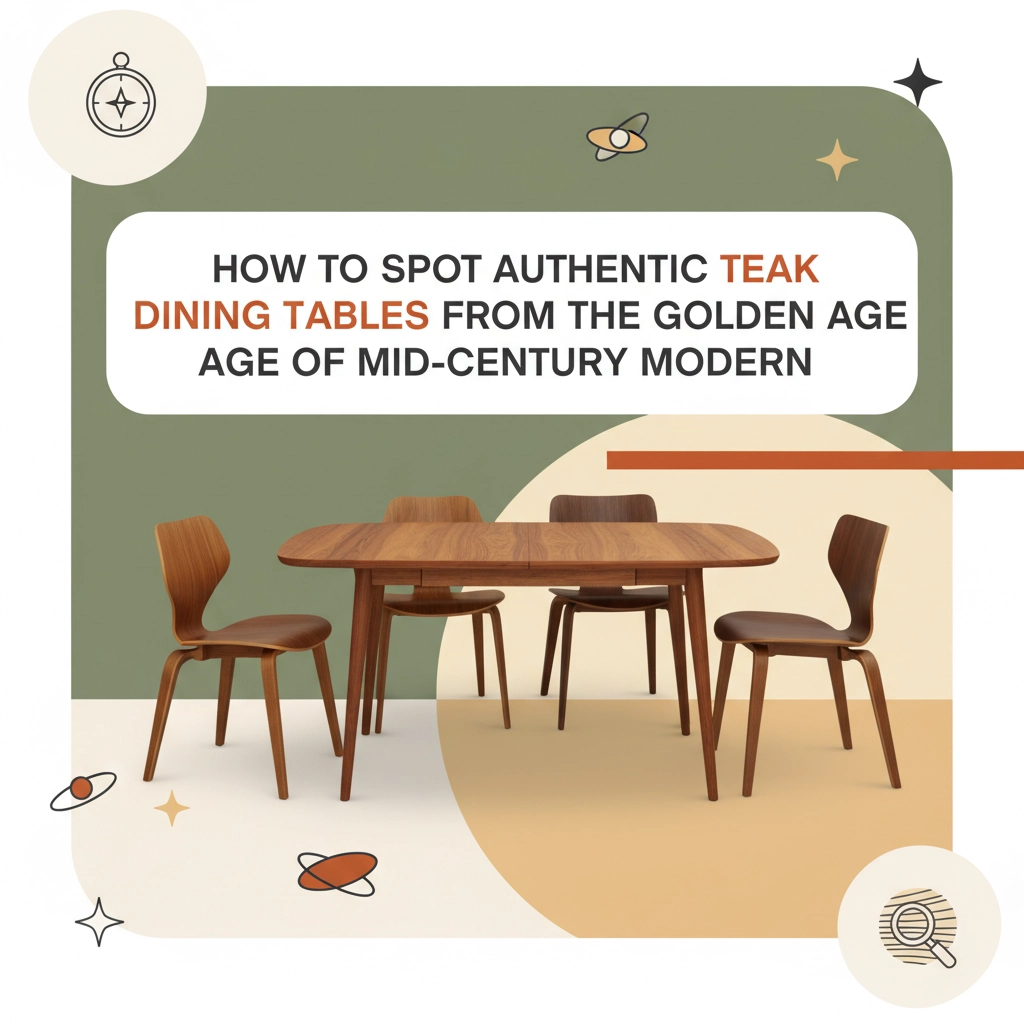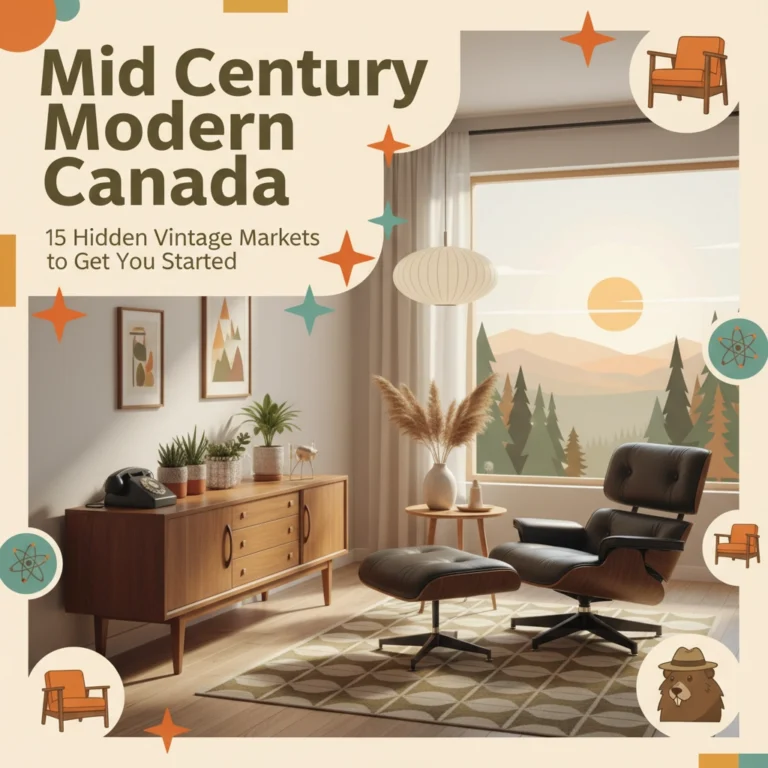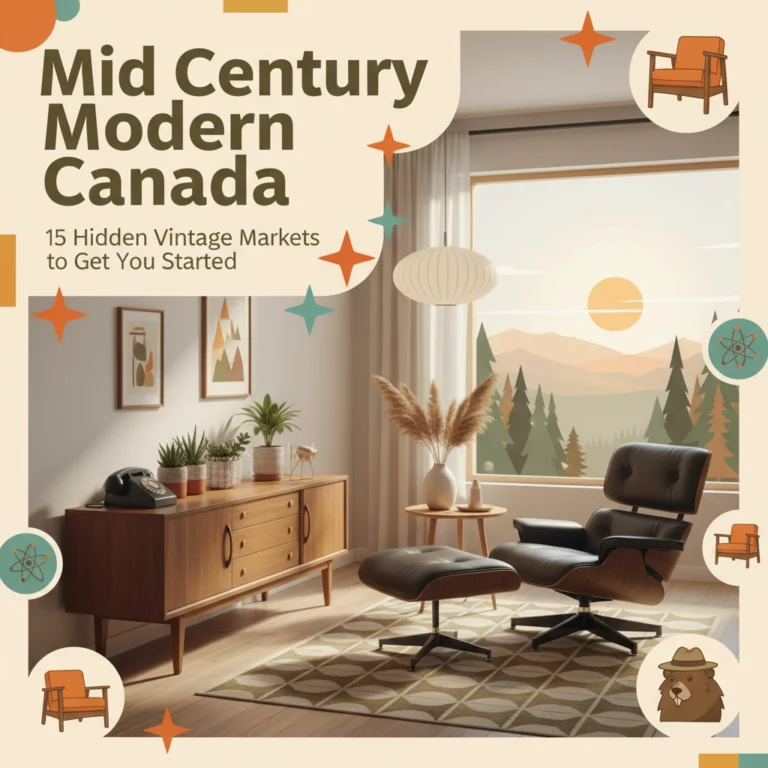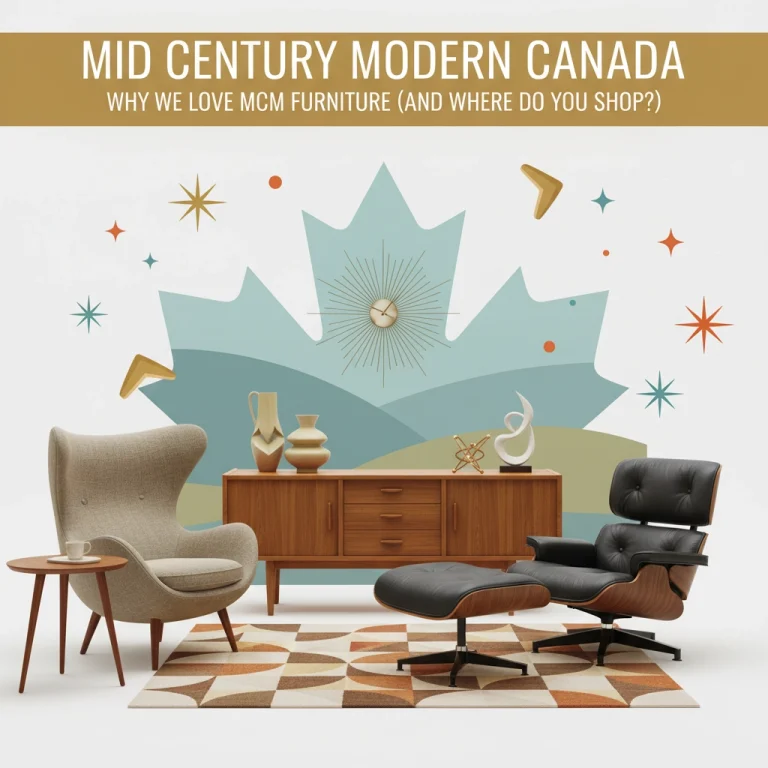If you're hunting for an authentic Danish teak dining table, you're in excellent company. These pieces represent the absolute pinnacle of Scandinavian design – clean lines, impeccable craftsmanship, and that warm teak glow that makes any room feel instantly sophisticated.
But here's the thing: the market is flooded with reproductions, "mid-century style" knockoffs, and pieces that look the part but lack the soul of true Danish craftsmanship. Learning to spot the real deal isn't just about protecting your investment – it's about bringing home a piece of design history that'll outlast us all.
Start With the Wood – It's Everything
Teak was king during the golden age of Danish furniture. You'll know authentic teak the moment you see it – that rich, golden-brown color with grain patterns that flow like water across the surface. Real teak feels substantial under your hands, polished and natural without any synthetic coating nonsense.
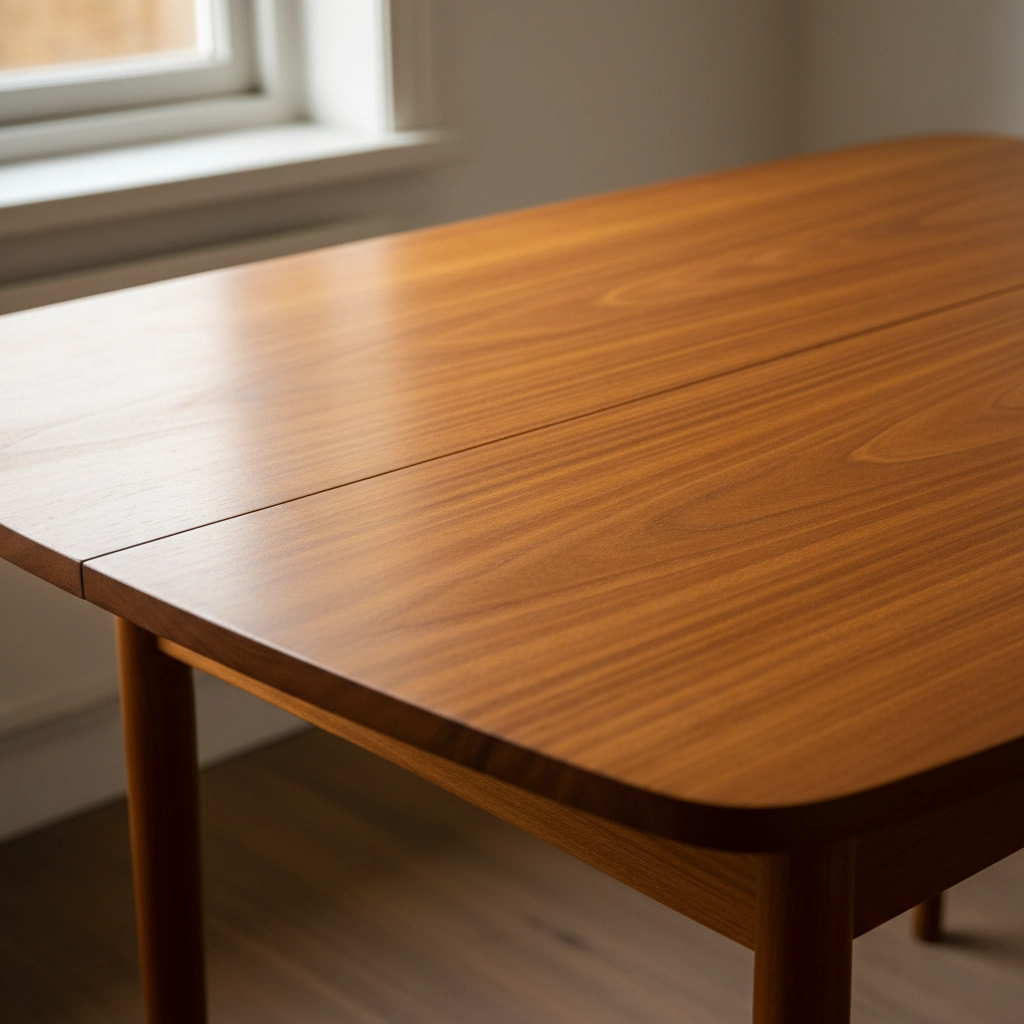
Run your fingers across the surface. Authentic teak develops a gorgeous patina over decades, and you should feel that smooth, lustrous finish that speaks to quality craftsmanship. If you're seeing shiny laminate layers or uneven staining, walk away. That's not your table.
Look for solid wood construction with minimal veneer use. The Danes weren't cutting corners – they used solid teak throughout, sometimes incorporating veneer only as accents or on hidden surfaces. The grain should be open and natural, not artificially enhanced or stained to look more dramatic.
Mid-century never really went away – it's always been waiting for its next admirer.
The Joints Tell the Real Story
Here's where things get interesting. Examine how the table is put together. Authentic Danish pieces showcase dovetail or finger joints – the kind of joinery that screams "hand assembly by someone who actually cared."
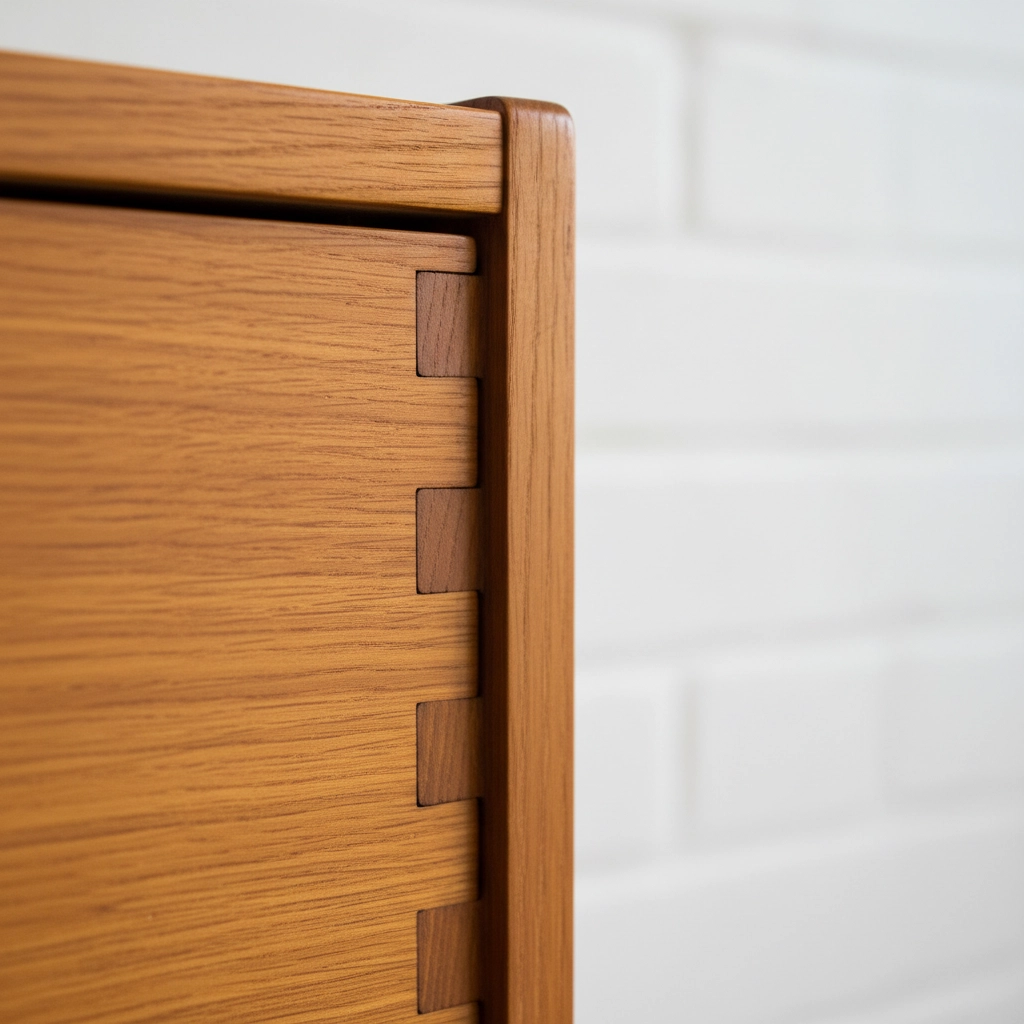
If you see screws sticking out, nails, or glue residue, keep looking. Danish craftsmen from this era took pride in their work. Every joint should fit perfectly, showing the precision that made Scandinavian furniture legendary worldwide.
For extending tables, test the mechanism. It should operate smoothly after all these years – that's Danish engineering for you. The extension leaves should slide like butter, and the locking mechanism should engage with a satisfying click.
Those Beautiful Tapered Legs
The legs are absolutely essential to authentic Danish design. You'll typically see beautifully tapered round legs that showcase the Danish obsession with clean, elegant lines. These aren't chunky or overly decorative – they're refined, purposeful, perfect.
Here's a neat trick: authentic Danish table legs can often be removed when you need to move the piece. British tables from the same era usually have fixed legs, but the Danes designed theirs for practical living. Try giving the legs a gentle twist – if they're threaded to come off, that's a great sign.
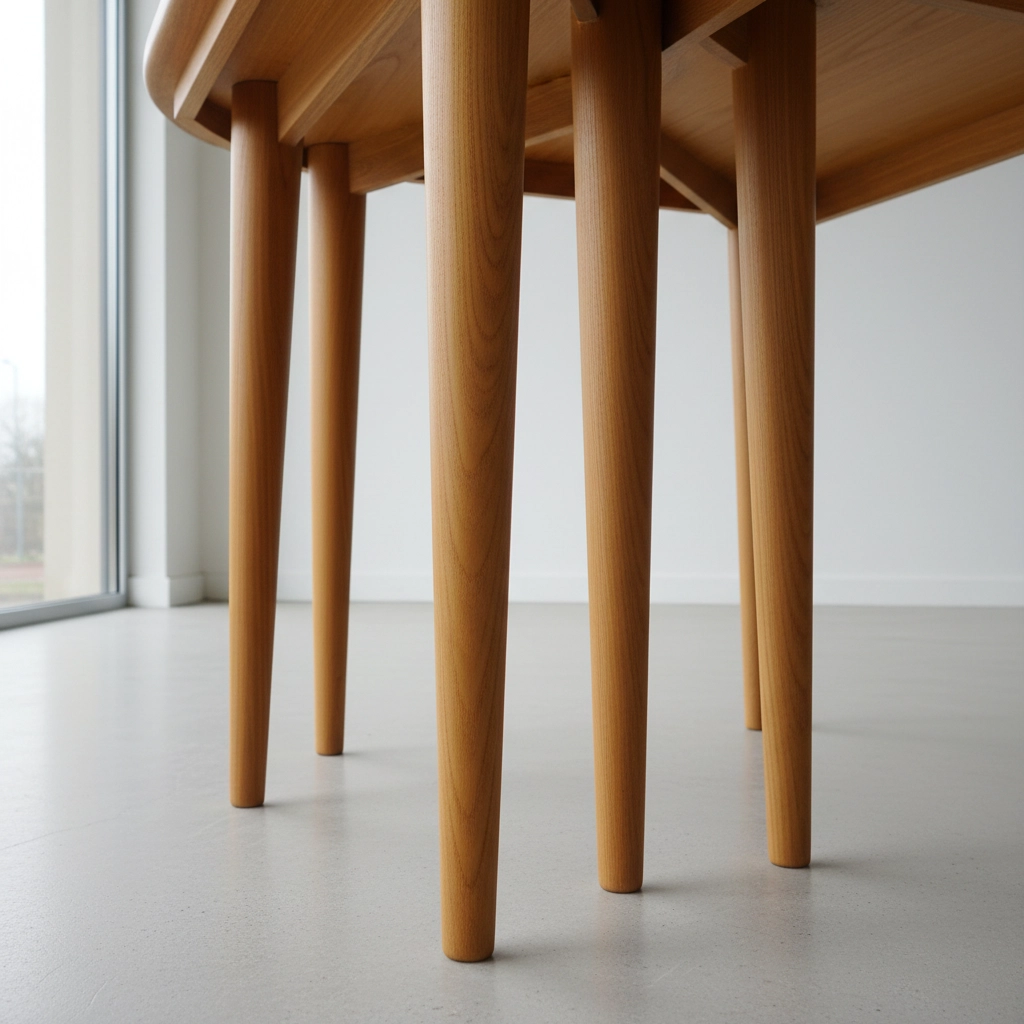
Many genuine pieces feature pedestal-type bases that allow the legs to extend when you add leaves. The overall aesthetic focuses on the innate beauty of the materials rather than flashy design elements. Minimal hardware, maximum impact.
Hunt for the Manufacturer's Mark
Look for stamps or labels – they're your authentication goldmine. These might be metal plates or paper labels tucked away on the underside of the tabletop, inside extension mechanisms, or along the aprons.
What you're hoping to find: the model number, manufacturer name, and city where it was built. Danish makers were proud of their work and usually marked it accordingly.
Don't panic if the label is missing, though. Some owners remove them over the years, or they simply wear away. Look for the ghost outline where a label used to be – that rectangular clean spot on otherwise aged wood is actually a good sign.
Spotting the Fakes and Modern Reproductions
Research the designer name before you buy anything. Cross-reference photos with museum archives or design catalogues. The internet is your friend here – use it.
Beware of anything labeled "mid-century style." That's usually code for "reproduction" or "inspired by" rather than the genuine article. Authentic pieces don't need to announce their style – it's just inherent in every line and joint.
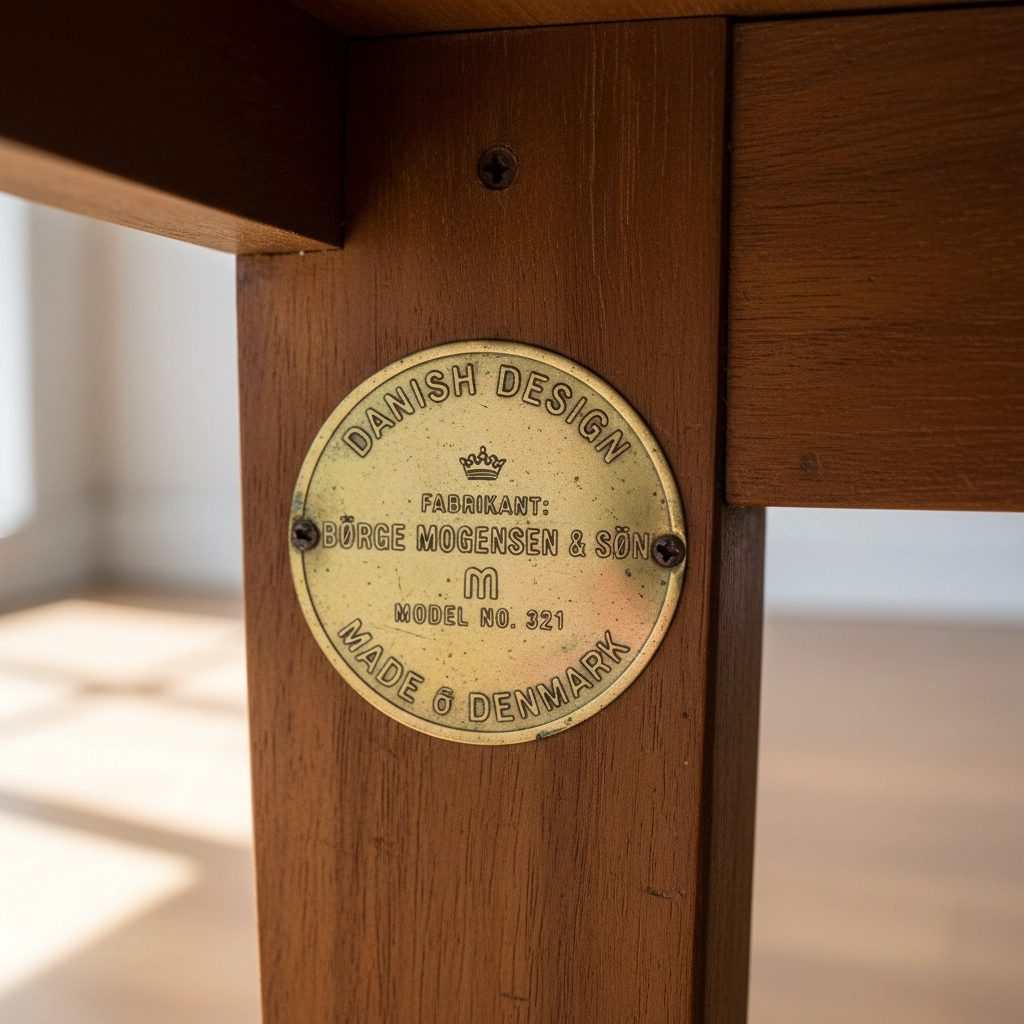
Modern reproductions often use cheaper wood species stained to look like teak. They might feature veneer over plywood (though some contemporary pieces still use solid wood frames). The giveaway is usually in the details – less precise joinery, hardware that feels flimsy, or finishes that look too perfect and uniform.
Ask about provenance if possible. Where did this table come from? How long has the seller owned it? Sometimes the story matters as much as the piece itself.
Trust Your Instincts (But Do Your Homework)
Authentic Danish teak dining tables feel different. There's a weight to them, a presence that reproductions rarely capture. The proportions look effortless, the finish glows with decades of careful maintenance, and every joint shows the hand of a craftsperson who understood wood.
When you find a piece that makes you stop and really look – that catches light in a way that makes the grain come alive – you're probably onto something special. But back up those instincts with research. Check comparable sales, verify the manufacturer, and don't rush into anything.
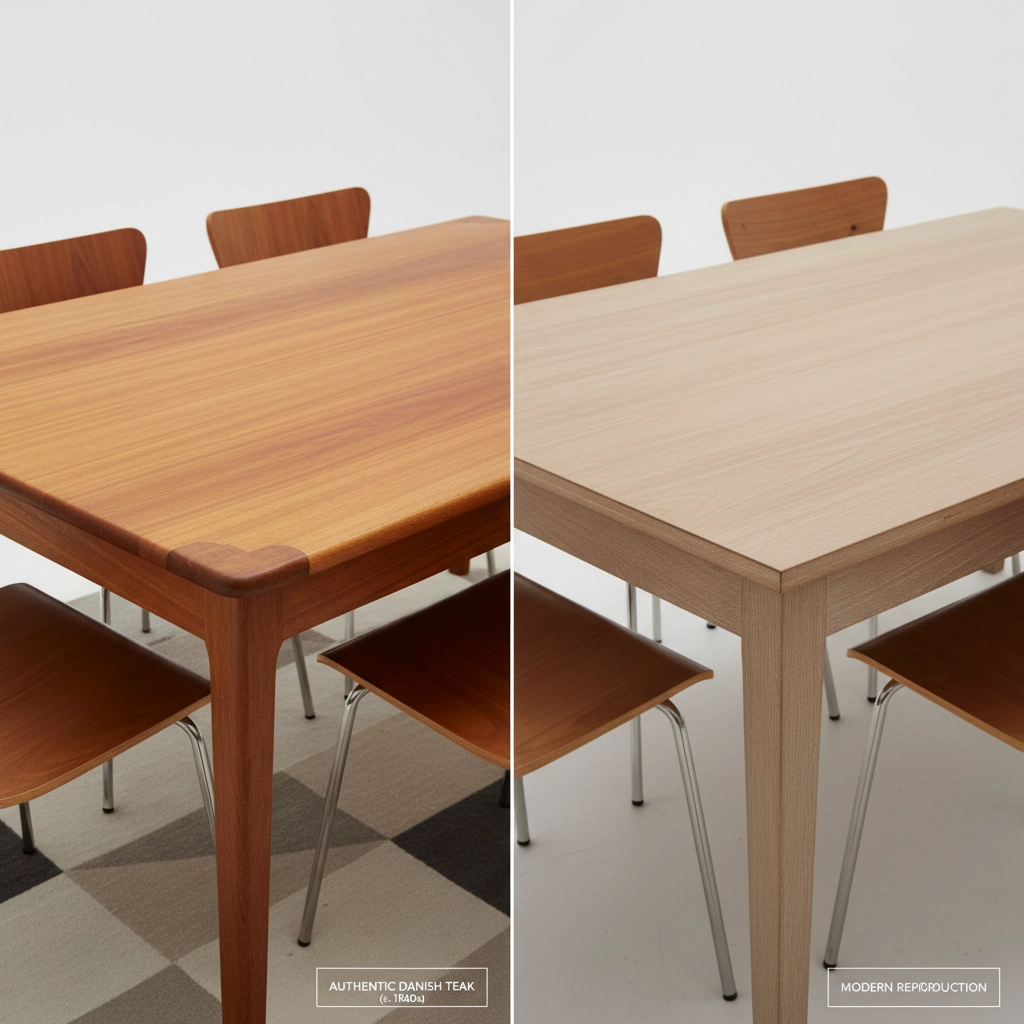
The Canadian market has some incredible finds. Danish furniture made it north in significant quantities during the heyday, and Canadian collectors have maintained these pieces beautifully. You'll often find tables that have been lovingly cared for in climate-controlled homes, showing minimal wear despite their age.
Your Next Steps
Found a table that's checking all the boxes? Take detailed photos from multiple angles – top, bottom, joints, legs, any maker's marks. Document the dimensions and any unique features. This documentation helps with authentication and becomes valuable if you ever decide to pass the piece along to another collector.
Remember, authentic Danish teak dining tables are investments that appreciate over time. They're not just furniture – they're functional art pieces that connect us to one of design history's most influential movements.
Whether you're looking to buy your first authentic Danish piece or ready to find a new home for a treasured table you've outgrown, connecting with fellow collectors and enthusiasts makes all the difference. Ready to join Canada's most dedicated mid-century modern community? List your MCM pieces for free at https://midcenturyclassifieds.ca and connect with collectors who truly understand what makes these pieces special.
No commission, no hidden fees – just authentic connections between people who appreciate great design.


